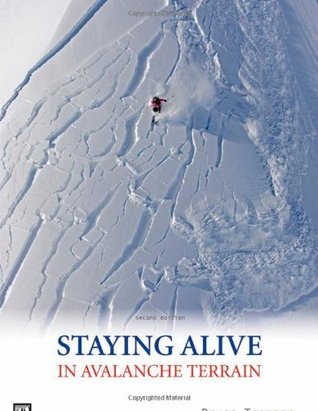More on this book
Kindle Notes & Highlights
for snow to avalanche we need all three legs of the stool: 1) snow unstable enough to initiate a fracture, 2) sufficient stored, elastic energy to propagate that fracture, and 3) the proper snowpack structure to propagate a fracture.
Snow is very sensitive to the rate at which it is deformed. This is probably the most important property to remember about snow, and it’s the cause of most avalanche fatalities.
Wind can deposit snow ten times more rapidly than snow falling out of the sky, making it usually the most important weather factor to consider.
“sintering”—forming bonds with neighboring crystals to create the fabric of the snowpack.
Creep is very important in the snowpack because the surface layers travel downhill faster than deeper layers, which causes “shear stress.”
snow does not like rapid change.
When the viscosity of the slab is about the same as the viscosity of the weak layer, the snow tends to be stable.
you stand a better chance of staying on the good side of a fracture line by standing above a tree instead of below it
Flagged trees—trees with all the uphill branches stripped off—indicate trees that regularly get hit by avalanches.
North-facing slopes receive very little heat from the sun in midwinter. Conversely, south-facing slopes receive much more heat. Therefore, a north-facing slope will usually develop a dramatically different snowpack than a south-facing slope. • East-facing slopes catch sun only in the morning when temperatures are colder; west-facing slopes catch the sun in the warm afternoon. Consequently, east-facing slopes are colder than west-facing slopes (Figure 3-16).
A cold snowpack tends to develop more persistent weak layers than a warm snowpack as long as it’s not too cold
be suspicious of any steep slope with recent deposits of wind-drifted snow.
The perfect storm starts out as relatively heavy, wet snow, so it bonds well to the old snow, then progressively turns colder, thus depositing lighter and lighter snow. We call this “right-side-up snow.” It bonds well to the old snow, the new snow doesn’t have a slab, and if there are no instabilities in the old snow, everything is hunky-dory.
warm air can hold more water vapor than cold air.
Clouds trap and reradiate outgoing radiation, acting like giant heat lamps in the sky.
A good soaking rain in particular is sometimes referred to as “raising the ground level” because future avalanches seldom break below this layer. The bad news is that, in the short term, the added weight of the hard layer of snow can make the snow unstable. Example: a strong rain-on-snow event makes the snow unstable while and immediately after it occurs, but it makes the snow more stable after the instability has settled out.
Most avalanche fractures occur within a distinct weak layer sandwiched between two harder layers, but sometimes the fracture occurs simply because of a poor bond between two layers—in other words, a weak interface.
When new snow falls on a sun crust, check out whether the sun crust is wet or frozen when the snow starts. If it’s wet, the new snow will stick to it and you most likely won’t have any immediate avalanche problem. If the crust is frozen, then the new snow does not tend to bond very well.
Simply work the terrain to your advantage, starting on the southeast-facing slopes in the earlier morning then switching to south-facing by midmorning and finishing on southwest-facing by about noon.
major motion picture, Steep,
Rain crusts are not always dangerous. Like a sun crust, you have to watch closely to see whether the rain crust is soggy or frozen when the next snowstorm begins. If it’s wet, the new snow will usually bond to it and you probably won’t have any problems—at least in the short term. If, however, the rain crust is well frozen and the next storm begins with low density dry snow, then it’s like trying to make feathers stick to a sloping pane of glass. You can expect fairly widespread soft slab activity running on the hard rain crust.
Wind slabs on depth hoar exist throughout most of the season in continental climates, and when you add large populations to the equation, the result is many avalanche fatalities. Thus, Colorado leads the nation in avalanche fatalities.
The best stability tests for depth hoar, listed roughly in the order of reliability, are recent avalanche activity, explosives tests, cornice drops, extended column tests or propagation saw tests, rutschblock tests, compression tests (do lots of them in representative places), and jumping on test slopes. Weather isn’t quite as reliable unless it’s really obvious weather like a heavy loading or rapid warming of the overlying slab. (See Chapter 6, Stability, for more information on tests.)


